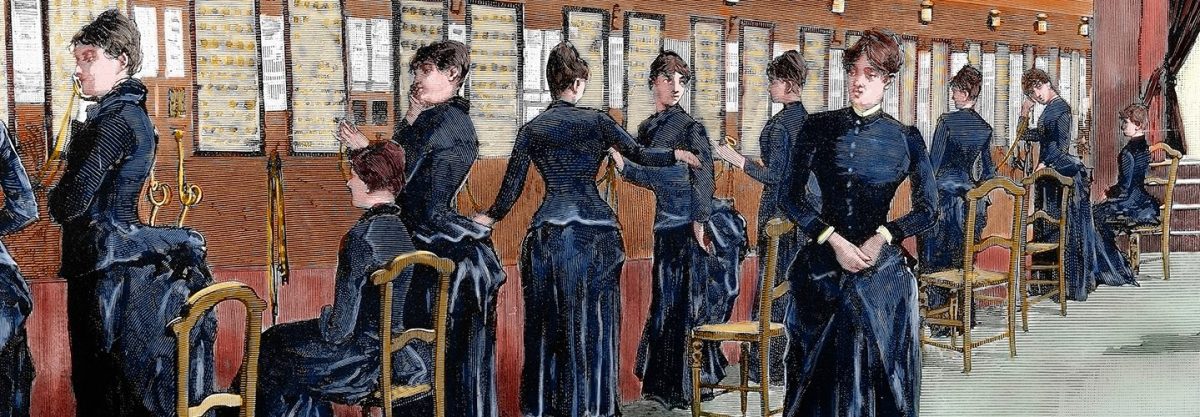“Siri, who wrote Glen Campbell’s hit song ‘Wichita Lineman?’”
Your iPhone’s digital assistant—or if you don’t have an iPhone, Amazon’s Alexa—would tell you that it’s songwriter Jimmy Webb. But in the days before Siri and Alexa, there was an actual human being on the other line, whose job was to connect your call via a rather complicated switchboard.
According to the New England Historical Society, the first woman on the job was one by the name of Emma Nutt, who was hired by Alexander Graham Bell (yes, that guy) at the Edwin Holmes Telephone Dispatch Company in Boston in September 1878. Sister Stella soon followed as the second.
Paid $10 per month for a 54-hour workweek—with a one-hour break for lunch—Nutt was said to have been such a quick study that she memorized the entire New England Telephone Company directory.
To become an operator, there were some requirements, including needing to be single, between the ages of 17 and 26, and tall enough to reach the switchboard (at that point, women operators stood on the job). As the Atlantic notes, “Connecting a call, back then, was physical labor; each one required some two to six people to plug switches into tall switch boards. This generally meant days spent standing and stretching and kneeling.” Also, in a sign of the times, African-American and Jewish women were barred from the position.
What brought Nutt into the fold? Before women were telephone operators, the role had been predominantly given to teenage boys. But their impatience, penchant for joking around with callers on the other end of the line, and using bad language—what’s new?—made for an imperfect match. Nutt was the opposite, and by 1880, women dominated the telephone operator business.
This article appeared in an InsideHook newsletter. Sign up for free to get more on travel, wellness, style, drinking, and culture.























